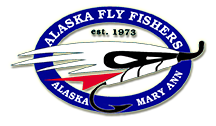

Watershed
By Bill Hauser
Watershed. A stream is much more than a ditch or a trench with water flowing through it. Streams are a complex mix of various components that begin with strata of bedrock and ending with layers of gravels that have taken eons to develop. Through centuries, rivers change in many ways and some changes leave footprints in the landscape that become part of the watershed. Water enters and leaves the stream in various ways including rainfall, snowmelt, and groundwater. The stream and watershed morphology and the stream water conditions; e.g., water temperature and water quality, determine the distribution and relative abundance of fishes, fish habitat, and fish food. In short, a stream is a complex, dynamic amalgam of physical, biological, chemical, ecological, and hydrologic units.
A watershed is interconnected by strands of surface water as well as groundwater in the hyporheic zone where groundwater and surface flows mix and the phreatic zone where the rock and soil is saturated. Wetlands also contribute to the groundwaters and surface waters.
Thus, if the stream is disturbed; e.g., by mining, these components must be fully understood if there may be any chance of being reconstructed.
Fish in a Watershed. Each different species of fish have different habitat needs from different parts of a watershed for different parts of their life cycle and within different parts of a year, including spawning, young of year rearing, older rearing, spawning, overwintering, and seasonal access to migration corridors for the different habitats. Among the salmon, coho salmon, arguably, have the most complicated freshwater life history and are especially vulnerable to any disturbance of the watershed. Spawning by adults is during late summer. Eggs incubate during winter, alevins hatch in mid winter, and young of year fry emerge during early spring. The young fish feed and grow in low velocity water such as backwaters and side channels until fall when many move downstream into beaver ponds or deeper pools to overwinter. Faster growing, larger individuals may become smolts at one year of age and leave the system. Most spread out in the drainage and grow for another summer and then overwinter before they become smolts after two or more winters. Some may enter the estuarine waters for some amount of time. After a year at sea, mature adults return and home to their home stream to spawn. Upwelling groundwater is particularly valuable for incubating eggs and overwintering survival because the upwelling water prevents freezing.
Dolly Varden also have a very complicated life cycle that is similar to the coho salmon except Dolly Varden often spawn more than once before they die. Some are anadromous. In fact, in some populations, individuals may spawn and overwinter in one drainage, migrate into saltwater and enter another stream to feed before they return to their home stream to spawn.
The proposed coal mine in the Chuitna river watershed will destroy miles of productive streams and excavation will extend down to 300 feet. The underlying strata and groundwater will be destroyed. There is no scientific evidence that the area and stream can be recreated after mining.
Alaska Fly Fishers, 200 W 34th Ave, Suite 1233, Anchorage, AK 99503